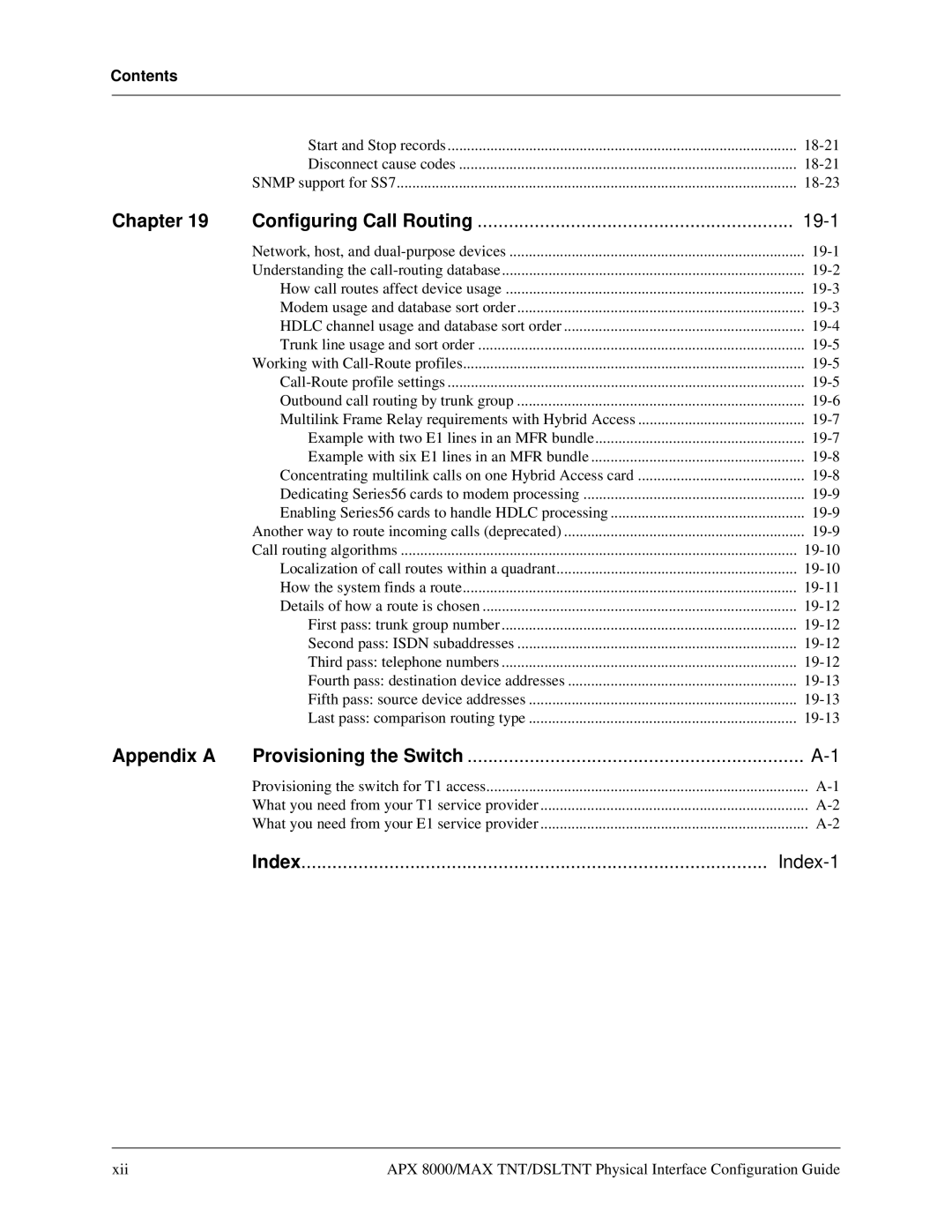
Contents
| Start and Stop records | |
| Disconnect cause codes | |
| SNMP support for SS7 | |
Chapter 19 | Configuring Call Routing |
|
| Network, host, and | |
| Understanding the | |
| How call routes affect device usage | |
| Modem usage and database sort order | |
| HDLC channel usage and database sort order | |
| Trunk line usage and sort order | |
| Working with | |
| ||
| Outbound call routing by trunk group | |
| Multilink Frame Relay requirements with Hybrid Access | |
| Example with two E1 lines in an MFR bundle | |
| Example with six E1 lines in an MFR bundle | |
| Concentrating multilink calls on one Hybrid Access card | |
| Dedicating Series56 cards to modem processing | |
| Enabling Series56 cards to handle HDLC processing | |
| Another way to route incoming calls (deprecated) | |
| Call routing algorithms | |
| Localization of call routes within a quadrant | |
| How the system finds a route | |
| Details of how a route is chosen | |
| First pass: trunk group number | |
| Second pass: ISDN subaddresses | |
| Third pass: telephone numbers | |
| Fourth pass: destination device addresses | |
| Fifth pass: source device addresses | |
| Last pass: comparison routing type | |
Appendix A | Provisioning the Switch | |
| Provisioning the switch for T1 access | |
| What you need from your T1 service provider | |
| What you need from your E1 service provider | |
| Index |
xii | APX 8000/MAX TNT/DSLTNT Physical Interface Configuration Guide |
